Transportation Methods in Dubai: A Comprehensive Overview
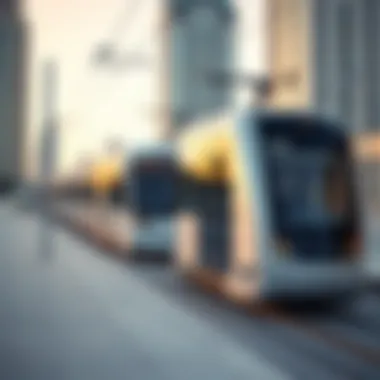
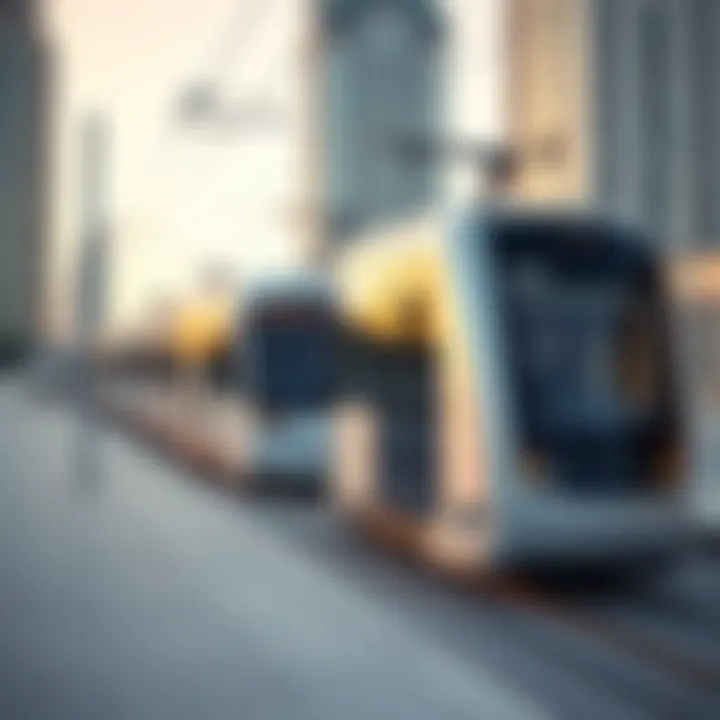
Intro
Dubai, known for its glitz and glamour, is not just an oasis of luxury; it’s a hub of diverse transportation methods that facilitate the daily lives of its residents and visitors alike. Navigating this vibrant city requires an understanding of the various options at hand, each with its own set of advantages and drawbacks. From the sprawling metro lines snaking through the urban landscape to the familiar simplicity of taxis, the transportation network in Dubai has evolved significantly over recent years.
Given its rapid growth, the transportation sector has had a profound impact on the city’s infrastructure, presenting challenges and opportunities that are intricately linked to urban living. As the city becomes increasingly congested, a shift towards sustainable methods becomes essential. In the following sections, we will delve into the myriad of transportation methods available in Dubai, looking at public transit systems, private vehicle ownership, and the future trajectories that lie ahead.
Understanding these aspects is vital for both locals and tourists, allowing them to make informed choices that enhance their travel experiences. Not only will the following insights be valuable for stakeholders in real estate and urban planning, but they will also serve as a crucial guide for anyone looking to navigate the broader landscape of transportation in this dynamic city.
Prolusion to Transportation in Dubai
Transportation plays a pivotal role in the dynamics of urban life in any metropolis, and Dubai is no exception. It is a city that has rapidly evolved, becoming a global hub for business, tourism, and innovation. Understanding the transportation landscape here is essential for residents and visitors alike. It not only underscores the accessibility of key destinations but also highlights the economic implications of mobility in a rapidly growing urban environment.
Significance of Transportation
In a city as bustling as Dubai, transportation systems are not just a means to get from point A to B; they are the backbone of daily life. The effective movement of people and goods shapes the very fabric of society.
- Economic Growth: Transportation fuels business activities by connecting residents with workplaces and tourists with attractions. It's no secret that efficient transit systems facilitate commerce and trade.
- Social Integration: An extensive network of transportation options bridges gaps between various communities, allowing for smoother interaction and connectivity.
- Environmental Impact: An effective public transportation system helps reduce carbon emissions by providing alternatives to private vehicle use, thus contributing positively to the city's sustainability goals.
Historical Context
Dubai’s transportation journey mirrors its rapid development over the last few decades. Traditionally reliant on modes like camels and boats, the emirate has moved towards modernization at a breakneck pace. The shifts in transportation reflect broader social and economic changes.
In the 20th century, after the discovery of oil, there was a significant investment in infrastructure. Roads were built, and vehicles flooded in. More recently, the launch of the Dubai Metro in 2009 marked a revolutionary step towards modern public transit. It was designed to alleviate traffic congestion and offer an efficient alternative to driving.
The subway system introduced state-of-the-art technology and wider access to transit for residents and tourists. Along with it, the adoption of innovative transportation solutions like ride-hailing apps and bike lanes showcases the city's embrace of contemporary transit solutions.
To summarize, the transportation framework in Dubai is integral to understanding its urban development. It involves a historical transformation that continues to adapt to the city's needs.
Public Transportation Systems
Public transportation in Dubai plays a crucial role in the city’s rapidly evolving infrastructure. Given the growth of urbanization and the influx of residents and tourists, the need for efficient transportation systems can’t be overstated. Not only does public transportation offer a solution to traffic congestion, but it also provides a reliable means of mobility for people from all walks of life. With various public transport options available, residents and visitors have the opportunity to navigate the sprawling city with ease.
Dubai Metro
Operational Overview
Dubai Metro stands as the backbone of the public transport network in the city. Operating since 2009, it is one of the longest automated metro systems in the world. With its cutting-edge technology and modern trains, it has changed how people connect across the city. A major highlight is that it's fully automated, which means no drivers, hence reducing the chances of human error. This is a beneficial feature as it enhances safety and efficiency of the transport system. However, the lack of human operators can sometimes lead to challenges during service disruptions.
Routes and Accessibility
The metro network consists of two main lines: the Red Line and the Green Line, which connect key areas such as the airport, malls, and business districts. This comprehensive route layout makes it a favorable choice for quick and convenient travel. The unique opportunity for commuters to avoid the heavy road traffic during peak hours also contributes to its popularity. One downside, however, is that while many areas are well-connected, some newer developments may still require additional accessibility solutions.
Cost and Coverage
Affordability is another major attribute of the Dubai Metro. Prices vary based on distance traveled, but the transportation costs are usually cheaper compared to taxis or private vehicles. Furthermore, the coverage extends to 49 stations across the city, making it easy for users to access different parts of Dubai. On the flip side, during peak times, trains can become overcrowded, which can detract from the commuting experience.
Buses in Dubai
Network Expansion
Dubai's bus network has seen substantial growth over the last decade. With newer routes constantly being added, the extensive network now boasts over a thousand buses traversing the city. This expansion has significantly improved public transport options, making it easier for individuals to reach even the more remote areas. The key characteristic of the bus system is its integration with the metro system, providing seamless connectivity for commuters. Yet, despite this broad network, there are still challenges with peak hour delays that can affect time management for users.
Service Reliability
Reliability of services is essential for any transportation system, and Dubai's buses aim to deliver on this front. The service frequency is commendable, especially during key travel times. This consistency is beneficial for daily commuters and occasional travelers alike. However, inclement weather and traffic can still cause unforeseen delays, which can be frustrating for passengers.
Integration with Metro
The integration between the bus and metro systems is a standout feature of public transport in Dubai. With strategically placed bus stops at metro stations, commuters can easily interchange between services. This convenience allows for efficient travel planning. However, the integration isn’t flawless; occasionally, bus schedules don’t align perfectly with train arrivals, which can lead to longer waiting times.
Trams and Light Rail
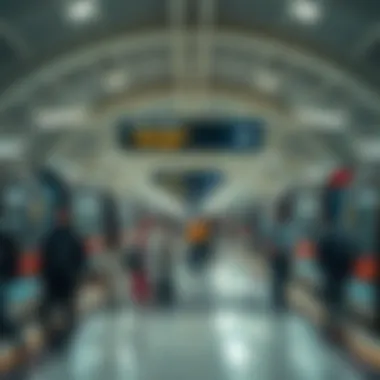

Current Operations
While still in its nascent stages, the tram system in Dubai operates primarily in the Dubai Marina area. Its design allows for easy access and connects with the metro and bus networks, presenting a collective transportation solution. The key characteristic here is the smooth operation with few reported delays, making it an appealing choice for those in the locality. Nevertheless, the limited coverage area remains a primary challenge, restricting its usefulness for those living outside the Marina.
Future Developments
Looking ahead, there are ambitious plans for expanding tram services, which will extend its reach throughout the city. This could very well foster greater urban mobility as more areas will benefit from accessible public transport options. The unique feature of this expectation centers on an integrated transport system that offers holistic access. Yet, actual implementation may face bureaucratic hurdles which might slow the progress.
Importance for Urban Mobility
Trams and light rail systems can significantly contribute to urban mobility by providing environmentally friendly options for commuting. Reducing reliance on cars can help mitigate congestion and pollution levels. However, the contemplation of urban space and real estate values must also factor into the future development plans, as ongoing changes can reshape community dynamics.
Water Transportation
Overview of Ferry Services
Water transport options like ferries and water taxis are essential elements of Dubai's multi-modal transport network. These services can provide a scenic and enjoyable alternative to traditional road travel. The ferries offer the unique advantage of bypassing road traffic altogether, appealing to both residents and tourists looking for quick connectivity to various parts of the city such as Dubai Marina and Jumeirah. Nonetheless, operating frequency can be a concern during off-peak times.
Abra Water Taxis
The Abra water taxi service is a charming nod to traditional transportation methods while seamlessly integrating with modern travel needs. Operating on Dubai Creek, these boats are quite economical and accommodate short-distance commutes. The key characteristic is their heritage; they emit a sense of nostalgia that enhances the overall travel experience. However, capacity limitations can occasionally lead to long wait times during peak days.
Environmental Benefits
Lastly, water transportation offers multiple environmental benefits. It serves to reduce carbon emissions and traffic congestion while providing a more sustainable mode of commuting. Utilizing waterways positively impacts the urban surrounding, making the city more eco-friendly. Yet, the ongoing maintenance and enhancement of water infrastructure remain vital to support growing demand, which could prove to be resource-intensive.
Private Transportation Options
The realm of private transportation in Dubai provides an essential layer to the city’s intricate travel landscape. This segment is increasingly important, especially for those who prefer flexibility and personal space while navigating Dubai's bustling streets. Understanding the various alternatives available is crucial, as they cater to the diverse needs of residents, expatriates, and visitors alike. With a wide variety of services, from taxis to personal vehicles, each option provides unique advantages and challenges that reflect the cultural and economic fabric of the city.
Taxis and Ride-Hailing Services
Traditional Taxi Services
Traditional taxi services in Dubai have stood the test of time, making them a staple in urban mobility. These taxis are usually identified by their cream-colored bodies with a colored top, and they can be hailed from the roadside or requested via phone. One key characteristic is their extensive availability across the city, providing quick, on-the-spot access for those needing transportation.
One beneficial aspect of these services is the reputable nature of their operations, regulated by the Roads and Transport Authority (RTA). This not only ensures safety but also establishes fixed pricing, so travelers don’t need to worry about being overcharged. However, a potential drawback is the often lengthy waiting times during peak hours.
Ride-Sharing Apps
Ride-sharing apps have taken the taxi service model and flipped it on its head, providing residents with a modern, user-friendly platform to book rides. By utilizing smartphones, customers can summon a car with a few taps. The convenience of being able to track their driver in real-time stands out as a prime advantage, giving users peace of mind regarding their pick-up and arrival times.
The increasing popularity of these apps can also be attributed to the competitive pricing compared to traditional taxis, especially during off-peak times. Nevertheless, they can experience surge pricing during high-demand periods, making costs unpredictable.
Cost Comparisons
Cost comparisons between traditional taxi services and ride-sharing apps reveal distinct patterns for users budgeting their travels. On the one hand, taxis offer transparency with fixed rates based on distance and location. On the other hand, ride-sharing services frequently employ algorithms that can lead to fluctuating prices based on demand.
Understanding these pricing structures is beneficial for residents and tourists to make informed decisions about their travel options. Each service has its benefits and drawbacks, which might make one more appealing than the other depending on the context.
Car Rentals
Rental Process
Renting a car in Dubai is notably straightforward, a key reason many opt for this method to traverse the city. The process typically involves presenting a valid driver’s license, a credit card, and sometimes an international driving permit, particularly for foreigners. One distinct advantage of renting is the plethora of options available—from compact cars to luxury vehicles—catering to various needs and budgets.
However, users must navigate traffic regulations and parking availability. This can be a hurdle for those unfamiliar with local driving customs, which are often quite different from other countries.
Pricing and Insurance
When it comes to pricing and insurance, the rental market in Dubai showcases a wide range of rates. Daily rental costs vary significantly based on the car model, rental duration, and time of year. While comprehensive insurance is an option often included in rental agreements, it may also come at an additional cost.
Renters should examine coverage limitations closely to avoid unexpected liabilities in case of an accident. This detailed examination helps clarify what is included and adds a layer of security to the rental experience.
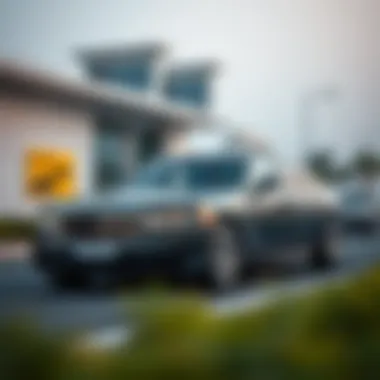
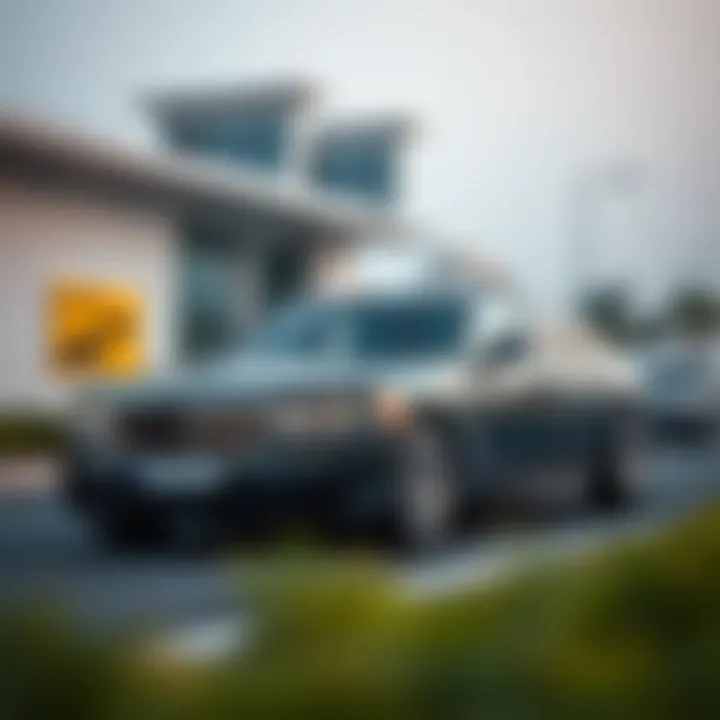
Popular Rental Companies
Dubai is home to several well-known car rental companies such as Europcar, Hertz, and Sixt, each providing distinct fleets and services. These companies are recognized for their reliability and customer service, ensuring that individuals can find suitable options quickly. The advantage of renting from established companies lies in their global experience and fleet variety. However, smaller, local companies may offer competitive pricing and more flexible terms that could appeal to budget-conscious travelers.
Personal Vehicles
Ownership Considerations
Owning a personal vehicle in Dubai is both a practical choice and a status symbol. Vehicles are often regarded as a reflection of one's personal taste and social standing. However, ownership comes with its own set of considerations, including registration fees, insurance, and regular maintenance costs. Many opt for personal vehicles due to the convenience they provide, especially given the vast distances between popular locations.
That said, buying a car may also lead to challenges like dealing with traffic congestion and finding a parking space, particularly in the busier parts of the city.
Fuel and Maintenance Costs
Fuel costs in Dubai are relatively low compared to many other cities, making driving an affordable option. However, potential car owners must also account for maintenance expenses, which can vary greatly depending on the make and model of the vehicle. Regular servicing is crucial to keep things running smoothly, yet it may add financial stress if not budgeted accordingly.
Moreover, with the growing focus on environmentally friendly practices, electric vehicles are becoming more popular, offering potential cost savings in fuel and maintenance in the long run.
Parking Availability
Parking availability in Dubai is a mixed bag. While many areas offer ample parking facilities, the increasing number of cars has led to a shortage in high-demand zones. In abundance are paid parking lots, which can add up quickly for daily users. Alternatively, some neighborhoods provide free parking, but they may not always be in proximity to major destinations.
In sum, having a personal vehicle does offer undeniable convenience, yet it’s often accompanied by logistical hurdles requiring careful planning.
Impact of Transportation on Urban Development
Transportation methods in Dubai are not just a matter of getting from point A to point B; they fundamentally shape the urban landscape. Good transportation links can transform communities, drive economic growth, and enhance social connections. These elements underscore the importance of examining how transportation serves as a catalyst for development in this vibrant city.
Economic Implications
Job Creation
Job creation is a major aspect of how transportation influences urban development. In Dubai, the establishment and expansion of transport networks have directly contributed to numerous job opportunities, not just in the transportation sector but across various industries. The construction of the Dubai Metro and the continuous development of roads and highways have kept many folks employed, showing how infrastructure projects often yield jobs during both the construction and operational phases. Moreover, as businesses flourish alongside these transport routes, more job opportunities emerge. However, the reliance on transportation systems for job proliferation can flip on its head if there are shifts in policy or economic downturns, leading to concerns such as job instability.
Business Connectivity
Business connectivity is another key characteristic of transportation's impact. It can mean smooth access to markets and resources, which is crucial for both local and international enterprises. For instance, free trade zones like the Jebel Ali Free Zone benefit immensely from their proximity to modern transport links like highways and the port. This ease of access often translates into efficiency gains for businesses, enhancing their global competitiveness. On the flip side, though, businesses situated away from key transport nodes may struggle with logistics, driving up costs and hindering growth.
Tourism Enhancement
Tourism enhancement ties in closely with effective transportation. Dubai is known worldwide for its attractions, and getting visitors around safely and comfortably has a direct effect on the tourism sector. Efficient transportation options, from the Metro to water taxis, help tourists explore the city with ease, making it a go-to destination. However, heavy tourist traffic can lead to challenges like congestion and wear-and-tear on infrastructure, requiring ongoing investment to maintain a high standard of service.
Environmental Considerations
Pollution Challenges
Pollution challenges are an undeniable reality as urban sprawl and increased transportation usage create a more congested environment. In Dubai, air quality has become a pressing topic, with the transport sector being a significant contributor. Although there are efforts toward more sustainable practices, high car dependency often leads to heightened emissions. The unique feature of these challenges lies in their complexity; tackling air pollution involves multifaceted solutions ranging from policies aimed at reducing vehicle numbers to promoting public transit over private car use.
Sustainable Practices
Sustainable practices are increasingly becoming popular in response to these pollution challenges. In Dubai, initiatives such as the introduction of electric buses and investment in cycling paths aim to reduce the carbon footprint of public transportation. Such practices not only mitigate environmental impacts but also promote healthier lifestyles among residents. However, the effectiveness of these decisions often hinges on public adoption and the upfront costs in infrastructure changes that can initially hit budgets hard.
Future Green Options
Future green options are on the horizon as Dubai envisions a more sustainable transportation landscape. Projects like the expansion of the Metro and the advent of autonomous vehicles promise a greener transit ecosystem. These innovations are geared toward not just minimizing environmental impact but also offering efficient and safer transportation alternatives. However, the integration of these technologies presents challenges, including the high costs of rollout and the need for effective regulation to ensure safety and reliability.
Social Accessibility
Equity in Transport Access
Equity in transport access ensures that everyone, regardless of income or location, can reach jobs, education, and social services. The diverse transportation options in Dubai aim to bridge gaps. However, disparities still exist, particularly in areas that are less serviced by public transit. An equitable transport system is vital in promoting social justice and community cohesion, and the government’s focus on expanding services to underprivileged neighborhoods reflects a commitment to addressing these issues. The downside is that achieving this equity requires persistent efforts and investment, which can sometimes lag behind growth.
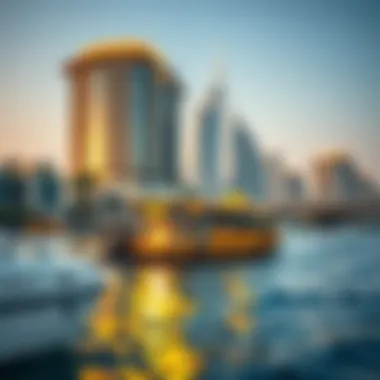

Impact on Daily Life
The impact on daily life is profound when considering how transportation influences mobility and convenience. Quick access to work or essential services shapes residents’ quality of life. For example, reliable bus services can reduce commute times and create a better balance between work and leisure for individuals. On the contrary, unreliable transport options can lead to frustration, missed appointments, and lost productivity, showing how the way people move affects countless facets of daily activities.
Community Engagement
Community engagement thrives when there are robust transportation systems in place. People are more likely to participate in local events when they can access them easily. In Dubai, initiatives like public consultative forums on new transport services allow residents to voice their needs, creating a sense of ownership and belonging. Though such engagement can be rewarding, balancing diverse opinions and managing logistics poses unique challenges.
Good transportation systems are essential not just for convenience but for equitable urban development that supports economic growth, environmental responsibility, and social inclusivity.
Future of Transportation in Dubai
The future of transportation in Dubai is not just a subject of interest; it’s a vital consideration for the city's ongoing growth and development. With rapid urbanization and a burgeoning population, the need for efficient transportation methods is more pressing than ever. This future is paved with technological advancements and ambitious infrastructure projects aimed at enhancing mobility and connectivity across the emirate.
Technological Innovations
Smart Transportation Systems
Smart transportation systems encompass advanced technology that improves safety, efficiency, and reliability. These systems integrate real-time data analytics, GPS technologies, and communication networks. A hallmark of smart transportation is the use of traffic management centers that can monitor and control the flow of traffic dynamically. This approach not only reduces congestion but also ensures better emergency responses. The major benefit of these systems lies in their capacity to optimize travel routes based on real-time traffic conditions—saving time and resources for commuters. However, the implementation process can be expensive and resource-intensive, which poses challenges for scalability.
Autonomous Vehicles
The concept of autonomous vehicles is revolutionizing transportation. Dubai has embraced the idea of self-driving cars, aiming to reduce human error-related accidents significantly. Autonomous vehicles depend on numerous sensors and AI algorithms that interpret surroundings to navigate. A crucial characteristic of these vehicles is that they could potentially offer transportation services to those who find it challenging to use traditional vehicles, such as the elderly or disabled. While there are tremendous advantages in safety and convenience, concerns about regulatory frameworks and public acceptance remain hurdles before full-scale deployment.
Integration of AI
Integrating artificial intelligence into transportation opens up fresh avenues for improving user experiences. AI technologies can personalize travel options based on individual preferences and historical data. A standout feature of AI integration includes predictive maintenance for public transport systems, which can prevent breakdowns and ensure reliability. This forward-thinking application establishes a more responsive public transportation system. Nonetheless, dependence on tech may introduce vulnerabilities, such as security threats and data privacy concerns that need addressing.
Upcoming Projects
Expansion of Metro Lines
The expansion of Dubai's metro lines contributes significantly to easing congestion and supporting the city's economic landscape. New lines will connect previously underserved areas, making public transit more accessible. The characteristic of these expansions is their focus on high-density areas that align with sustainable urban planning goals. One unique feature is the project to introduce "smart stations" equipped with technology to provide real-time information. However, the challenge lies in ensuring that the construction processes minimize disruption to the daily lives of residents.
New Ferry Routes
New ferry routes aim to enhance water-based transport options in Dubai. This initiative not only diversifies the transport network but also encourages residents to explore Dubai via its coastlines. A key feature is the introduction of routes that connect popular tourist spots to residential areas, thereby promoting tourism and local businesses. Although the ferries provide scenic travel alternatives, the reliance on weather conditions poses potential downsides.
Planned Infrastructure Projects
Planned infrastructure projects play a pivotal role in shaping the future of transportation in Dubai. The focus is on developing multi-modal transit hubs that integrate various forms of transport. A highlight of these projects is their emphasis on eco-friendly practices designed to reduce the carbon footprint of transportation. While this innovation is crucial for long-term ecological health, such large-scale projects often face funding and logistical challenges that can delay timelines.
Long-Term Vision
Vision Initiatives
Vision 2040 initiatives present a robust framework for sustainable and integrated urban development in Dubai. The core of the initiative revolves around creating a user-friendly transportation system that addresses current demands and anticipates future needs. A key characteristic is the focus on public transport as the backbone of the city’s connectivity. While the vision sets attractive goals, maintaining consistent funding and political support can prove challenging.
Global Comparative Analysis
A global comparative analysis helps gauge Dubai’s transportation systems against leading cities worldwide. This analysis allows planners to evaluate successful strategies and policies used elsewhere, aiming to adapt them to Dubai's unique context. One unique facet of this approach is the potential to identify gaps in services that can be improved upon based on international standards. Nevertheless, completely mirroring global practices may not work due to cultural and infrastructural differences.
Challenges Ahead
Challenges ahead in developing Dubai’s transportation systems can be substantial. From funding constraints to environmental considerations, these barriers must be navigated skillfully. A key characteristic of these challenges is the necessity for stakeholder collaboration among government bodies, private sectors, and the community. While the challenges are daunting, the potential for creative solutions is equally promising.
Epilogue
In considering the transportation methods in Dubai, it becomes clear that the city's investment in its transport infrastructure is not just a matter of convenience but also a fundamental aspect of urban living. Good transportation options can significantly affect everything from economic growth to environmental sustainability. As Dubai continues to evolve into a global hub for trade and tourism, having a reliable and efficient transportation system becomes essential.
Summary of Key Insights
- Importance of Public Transport: The robust public transit options, including the Metro and extensive bus networks, make travel accessible for residents and visitors. This system caters to a diverse demographic, enabling seamless connectivity across the city.
- Private Transport Growth: While public options are solid, private transportation continues to thrive, offering flexibility to those who prefer it. Companies like Careem and Uber have diversified personal mobility, leading to fierce competition that generally benefits consumers.
- Urban Impact: The development of transportation methods directly correlates to urban development. Job creation and increased tourism tie back to how well city transport works. A solid infrastructure attracts both investors and newcomers to the city.
- Environmental Considerations: The government has shown a commitment to sustainable practices, like incorporating electric vehicles and optimizing public water transport, indicating a long-term vision for a greener Dubai.
Final Thoughts on Transportation in Dubai
The landscape of transportation in Dubai exemplifies a city in transition, blending past traditions with modern innovations. Looking ahead, the integration of technology will likely redefine how residents and tourists navigate the city. The upcoming expansion projects, while ambitious, align with the broader vision for 2040, focusing on sustainability and smart technology. Keeping an eye on these developments can only provide insight into potential real estate investments and urban planning strategies.
Ultimately, understanding Dubai's transportation methods sheds light on how the city's growth can be navigated effectively. Whether one is an investor eyeing development opportunities or an expatriate looking for reliable commuting options, mastering this knowledge is invaluable. As the saying goes, "You can't put the cart before the horse," and in Dubai, the horse is certainly its transportation network.







